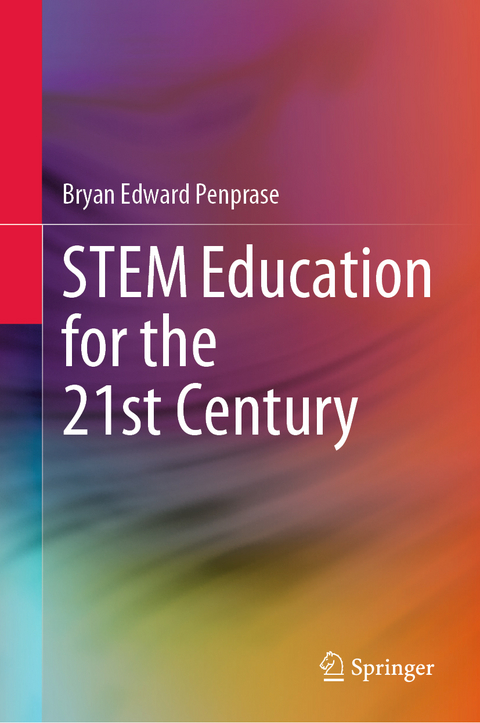
STEM Education for the 21st Century
Springer International Publishing (Verlag)
978-3-030-41632-4 (ISBN)
Professor Bryan E. Penprase is the Dean of Faculty for the Undergraduate Program at Soka University of America, in Aliso Viejo, CA. He also has been an American Council on Education Fellow at Yale University, Visiting Associate at the California Institute of Technology, and formerly was a Professor of Science at Yale-NUS College, and the Frank P. Brackett Professor at Pomona College, in Claremont, CA. As Dean of Faculty, Bryan directs the undergraduate program at Soka University of America, where he works to advance the innovative undergraduate liberal arts curriuclum and is developing a new interdisciplinary concentration in Life Science. Bryan received both a BS in Physics and an MS in Applied Physics from Stanford University in 1985, and a PhD from the University of Chicago in Astronomy and Astrophysics in 1992. Prof. Penprase conducts research on the most luminous sources of radiation in the universe: quasars, supernovae, gamma ray bursts, and merging neutron stars, in the context of his collaboration with astrophysicists at Caltech and worldwide on the "Zwicky Transient Facility" or ZTF. The research on such transients has discovered new types of supernovae, new gamma-ray bursts, and gravitational lensing sources. Bryan's research includes nearly all aspects of observational astrophysics, from photometric observations of nearby asteroids to spectroscopic studies of element formation in the Early Universe, using telescopes such as the Hubble Space Telescope and the Keck Telescope in Hawaii. Bryan is the author of "The Power of Stars - How Celestial Observations Have Shaped Civilization," published by Springer, Inc., numerous book chapters on liberal arts education and STEM curriculum, and over 50 peer-reviewed articles, in the Astrophysical Journal, Astronomical Journal, and in Nature and Science. Bryan has served on numerous NSF and NASA review panels, including the Hubble Space Telescope Time Allocation Committee and the NASA/Keck Time Allocation Committee, and has participated in the external review of the Five College Astronomy Program. His most recent research program is a collaboration with Caltech to develop the Zwicky Transient Facility (ZTF) and a Global Relay of Observatories known as GROWTH for studying gamma ray bursts, new supernovae, and the electromagnetic counterparts of gravitational wave sources.
Chapter 1 The Context of STEM in US Higher Education.- Chapter 2 Active Learning and Peer-based Learning.- Chapter 3 Theories of Teaching and Learning.- Chapter 4 Online Education in STEM.- Chapter 5 Engineering Education Reconsidered.- Chapter 6 Interdisciplinary Science Education.- Chapter 7 The Future of STEM Teaching and Learning.
| Erscheinungsdatum | 09.04.2020 |
|---|---|
| Reihe/Serie | SpringerBriefs in Education |
| Zusatzinfo | XVI, 133 p. 36 illus., 35 illus. in color. |
| Verlagsort | Cham |
| Sprache | englisch |
| Maße | 155 x 235 mm |
| Gewicht | 385 g |
| Themenwelt | Geisteswissenschaften ► Psychologie ► Pädagogische Psychologie |
| Medizin / Pharmazie ► Medizinische Fachgebiete ► Psychiatrie / Psychotherapie | |
| Sozialwissenschaften ► Pädagogik ► Schulpädagogik / Grundschule | |
| Schlagworte | Backward Course Design • Diversity in STEM • Engineering Education • Interdisciplinary science education • Learning and Instruction • Learning theories STEM • MOOC technology • Online learning higher education • science curriculum • Scientific Teaching • STEM teacher education • STEM teaching and learning • Threshold Concepts and Learning Taxonomies |
| ISBN-10 | 3-030-41632-1 / 3030416321 |
| ISBN-13 | 978-3-030-41632-4 / 9783030416324 |
| Zustand | Neuware |
| Haben Sie eine Frage zum Produkt? |
aus dem Bereich


